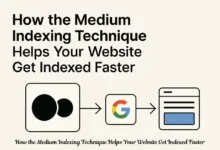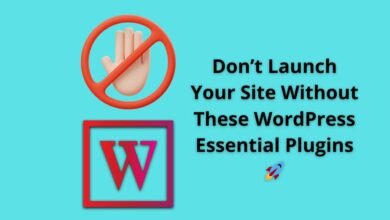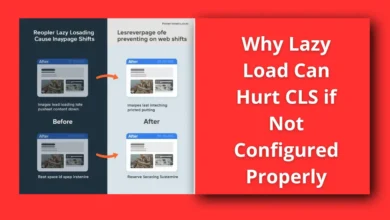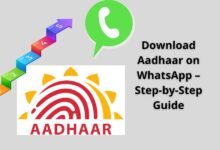Step-by-Step Guide to Setting Up a Blogger Blog
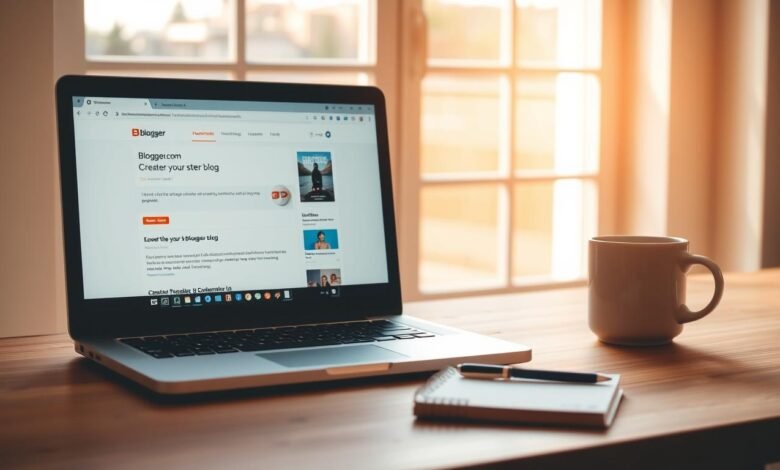
Did you know that there are over 600 million blogs on the internet, with thousands more being created every day? Starting a blog is a great way to share your thoughts, interests, and expertise with the world. Whether you want to document your travels, share recipes, or simply create a space for self-expression, creating a Blogger blog is an excellent way to get started.
With this guide, you’ll learn how to set up a Blogger blog from scratch. We’ll walk you through the process, making it easy for beginners to follow along. By the end of this article, you’ll have a fully functional blog where you can share your ideas and connect with like-minded individuals.
What is Blogger and Why Choose It?
Blogger, owned by Google, offers a seamless blogging experience that integrates well with other Google services. This makes it an ideal choice for those already using Google’s ecosystem.
Blogger’s Key Features
Blogger’s simplicity and flexibility make it a popular choice. Some of its key features include:
- Easy integration with Google services like Google Analytics and AdSense
- Customizable templates to personalize your blog’s design
- A user-friendly interface for creating and managing blog posts
- Support for multiple authors and permissions
Advantages Over Other Blogging Platforms
Compared to other blogging platforms, Blogger offers several advantages:
- Seamless integration with Google services, enhancing functionality and monetization options
- Highly customizable, allowing for a unique blog design
- Reliable hosting and maintenance, thanks to Google’s infrastructure
Who Should Use Blogger
Blogger is suitable for a wide range of users, from hobbyists to professionals. It’s particularly ideal for:
- Those already using Google services, as it integrates well with their existing workflow
- Beginners, due to its user-friendly interface and simplicity
- Professionals looking for a customizable and reliable blogging platform
In conclusion, Blogger’s ease of use, integration with Google services, and customization options make it a compelling choice for anyone looking to create a blog from scratch.
Read Also :
Free WordPress Themes: The Best Options for Your Site
Getting Started: Creating a Google Account
To start a Blogger blog, you’ll first need to create a Google account, a straightforward process that unlocks a world of blogging possibilities. Blogger is a part of the Google ecosystem, so having a Google account is essential for accessing its features.
Setting Up a New Google Account
Creating a new Google account is a simple process that requires some basic information. You’ll need to provide your name, choose a unique email address, and create a password.
Required Information
When setting up a new Google account, you’ll be asked to provide some personal details, including your first and last name, email address, and password. It’s essential to use a valid email address and a strong, unique password to secure your account.
Security Settings
Google will also prompt you to set up security settings, such as recovery information and two-factor authentication, to help protect your account from unauthorized access. Enabling two-factor authentication adds an extra layer of security, making it harder for others to access your account.
Using an Existing Google Account
If you already have a Google account—perhaps you’re using Gmail or Google Drive—you can use that account to sign in to Blogger. This means you won’t need to create a new account or remember additional login details.
Accessing the Blogger Platform
With your Google account ready, you’re just a step away from accessing the Blogger platform. This step is crucial in the blogger blog building process as it allows you to start creating your blog.
Navigating to Blogger
To access Blogger, simply go to the Blogger website and sign in with your Google account credentials. You can also access Blogger through your Google account dashboard by clicking on the Blogger icon.
Understanding the Blogger Dashboard
Once you’re signed in, you’ll be taken to the Blogger dashboard. The dashboard is the control center of your Blogger blog, where you can manage your blogs, create new posts, and customize your blog’s settings. As “The dashboard is where you will spend most of your time configuring and managing your blog”, it’s essential to familiarize yourself with its interface.
Interface Overview
The Blogger dashboard is divided into several sections, including the navigation menu, blog list, and settings. You can use the navigation menu to access different features such as creating new posts, viewing your blog’s stats, and customizing your blog’s design. Understanding the layout and features of the dashboard is key to making a blogger blog that is both functional and visually appealing.
By following these steps, you’ll be well on your way to creating a successful Blogger blog. The process is straightforward, and with a little practice, you’ll become proficient in navigating the Blogger platform.
The Steps to Create a Blogger Blog from Scratch
Creating a Blogger blog from scratch is a straightforward process that requires a few simple steps. To get started, you’ll need to follow a series of guided instructions within the Blogger platform.
Creating Your First Blog
To create your first blog, navigate to the Blogger dashboard and click on the “Create a Blog” button. You’ll be prompted to enter some basic information about your blog.
Choosing a Blog Name and Title
Choosing a blog name and title is a crucial step in establishing your online identity. Make sure to pick a name that is memorable, easy to spell, and relevant to your content. Your blog title should also be descriptive and attention-grabbing.
Selecting a Blog Address (URL)
Your blog’s URL is its address on the web. When selecting a blog address, consider using a domain name that is easy to remember and relevant to your blog’s content.
Best Practices for Blog URLs
- Keep it short and simple
- Avoid numbers and special characters
- Make it descriptive and relevant to your content
- Avoid using hyphens or underscores if possible
By following these best practices, you can create a blog URL that is both memorable and search engine friendly.
Selecting and Customizing Your Blog Theme
When setting up your Blogger blog, one of the most exciting steps is choosing a theme that reflects your brand’s identity. Blogger offers a variety of themes to suit different tastes and blogging needs. Your blog’s theme is more than just aesthetics; it’s about creating an engaging user experience that keeps your readers coming back.
Browsing Available Themes
Blogger provides a range of free themes that you can browse through. To find the perfect theme, navigate to the “Theme” section in your Blogger dashboard. Here, you can preview themes by clicking on them. Previewing themes allows you to see how your content will look without making any permanent changes.
Applying and Previewing Themes
Once you’ve found a theme you like, you can apply it to your blog with a single click. Blogger also allows you to preview themes before making them live, ensuring you can test how your blog looks without committing to the change.
Basic Theme Customization Options
After selecting a theme, you can customize it to better suit your brand. Blogger offers several basic customization options, including adjusting colors and fonts, and modifying layout elements.
Adjusting Colors and Fonts
To adjust colors and fonts, navigate to the “Customize” section of your chosen theme. Here, you can change the color scheme and font styles to match your brand’s visual identity. Consistency in branding is key to establishing a recognizable presence online.
Modifying Layout Elements
Blogger also allows you to modify layout elements, such as adding or removing sidebars, adjusting the width of your blog, and more. These modifications can enhance the user experience and make your blog more engaging.
As
“The right theme can elevate your content and make your blog stand out.”
, customizing your Blogger blog theme is a crucial step in setting up your blog for success.
Setting Up Essential Blog Pages
Setting up essential blog pages is a crucial step in establishing a professional presence on Blogger. These pages provide visitors with valuable information about your blog and help build trust with your audience.
Creating an About Page
An About page is where you share your story, introducing yourself and your blog to your readers. To create an About page, navigate to the “Pages” section in your Blogger dashboard, click on “New page,” and start writing your content. Use this opportunity to showcase your personality and establish a connection with your audience.
Setting Up a Contact Page
A Contact page allows readers to get in touch with you directly. To set up a Contact page, you can use a simple contact form or provide your email address. This page is essential for building a relationship with your readers and receiving feedback.
Adding a Privacy Policy
A Privacy Policy page is a legal requirement for many blogs, especially those that collect user data or participate in advertising programs. You can generate a Privacy Policy using online tools and then add it to your Blogger blog as a new page.
Other Important Static Pages
Depending on your blog’s niche and requirements, you may need to create additional static pages, such as a Disclaimer or an FAQ page. These pages help to provide clarity and transparency, enhancing the overall user experience.
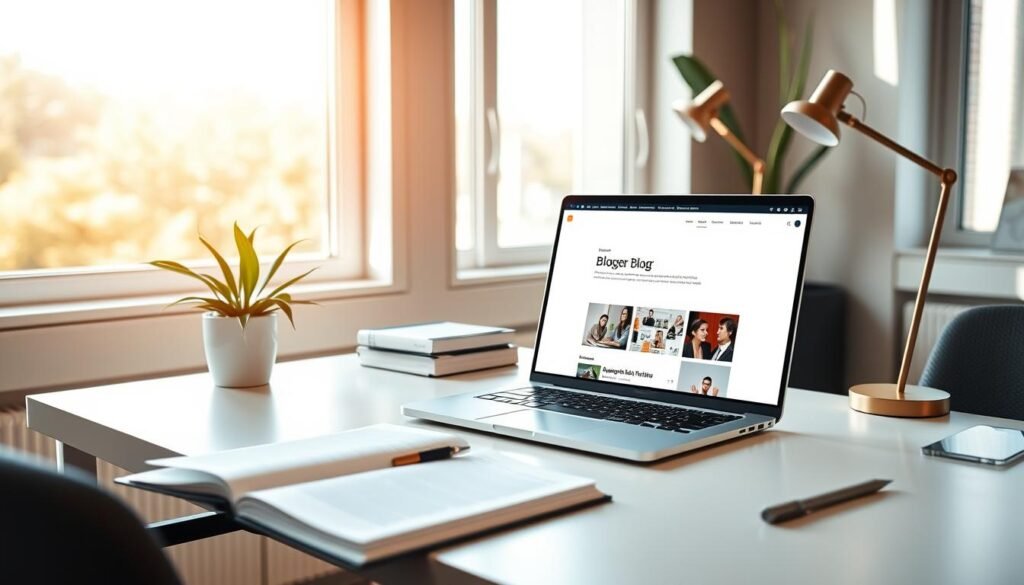
Configuring Blog Settings and Preferences
Configuring your Blogger blog’s settings is essential for a smooth and personalized blogging experience. This involves several key steps that will help you manage your blog effectively.
Basic Settings Configuration
To start, navigate to the “Settings” tab on your Blogger dashboard. Here, you’ll find options to configure basic settings such as your blog’s title, description, and timezone. Ensuring these are correctly set is crucial for your blog’s identity and functionality.
Privacy and Permissions
Under the “Privacy” section, you can control who can view your blog. You can make it public, private, or restrict it to specific readers. Additionally, you can manage permissions for other users, allowing them to contribute to your blog.
Comment Settings
Managing comments is vital for maintaining a positive interaction with your readers. Blogger allows you to control who can comment on your posts and how comments are displayed.
Moderating Comments
You can choose to moderate comments, allowing you to review and approve them before they appear on your blog. This helps in filtering out spam and inappropriate content.
Spam Protection
Blogger provides spam protection tools to help minimize unwanted comments. You can also use third-party gadgets for additional security.
Language and Formatting Options
Blogger allows you to select your blog’s language and formatting options, including date and time formats. This ensures that your blog is presented in a way that’s most appealing to your target audience.
“Customizing your blog’s settings is a powerful way to enhance your blogging experience.” By carefully configuring these options, you can create a more engaging and user-friendly blog.
Creating Your First Blog Post
Now that your Blogger blog is set up, it’s time to dive into creating your first blog post. This step is crucial as it sets the tone for your blog and gives your readers a first impression.
Using the Blogger Post Editor
The Blogger post editor is a versatile tool that allows you to create and format your blog posts with ease. You can switch between the Compose and HTML views to either use a visual editor or directly edit the HTML code.
Text Formatting Tools
The text formatting tools in Blogger allow you to change the font, size, color, and alignment of your text. You can also add bold, italic, or strikethrough text to emphasize certain points.
HTML Editing Options
For more advanced users, Blogger’s HTML editing options provide the flexibility to directly edit the HTML code of your post. This is useful for adding custom elements or fine-tuning the layout.
Adding Images and Media
Adding images and media to your blog post can enhance its appeal and engagement. You can upload images directly to Blogger or embed videos from platforms like YouTube.
Creating Engaging Headlines
Crafting an engaging headline is crucial for capturing the attention of your readers. Your headline should be informative, yet enticing enough to encourage readers to continue reading.
Publishing vs. Saving as Draft
Blogger allows you to either publish your post immediately or save it as a draft for later. Saving as a draft is useful for reviewing and editing your post before it goes live.
Post Scheduling Options
One of the powerful features of Blogger is the ability to schedule your posts in advance. This allows you to plan your content ahead of time and maintain a consistent posting schedule.
By following these steps, you’ll be well on your way to creating engaging and well-structured blog posts that attract and retain readers.
Organizing Your Content with Labels and Pages
As you continue to create content on your Blogger blog, organizing it becomes crucial for a better reader experience. A well-organized blog not only enhances user experience but also improves search engine visibility.
Creating and Managing Labels
Labels in Blogger are akin to categories or tags that help in grouping related posts together. To create a label, simply type it into the Labels field when creating or editing a post. You can manage your labels by going to the Posts tab and using the Labels filter.
Setting Up Navigation Menus
Navigation menus are essential for helping visitors find their way around your blog. You can set up a navigation menu by adding a Pages gadget to your blog’s sidebar or header. This allows you to link to important pages such as your About page or Contact page.
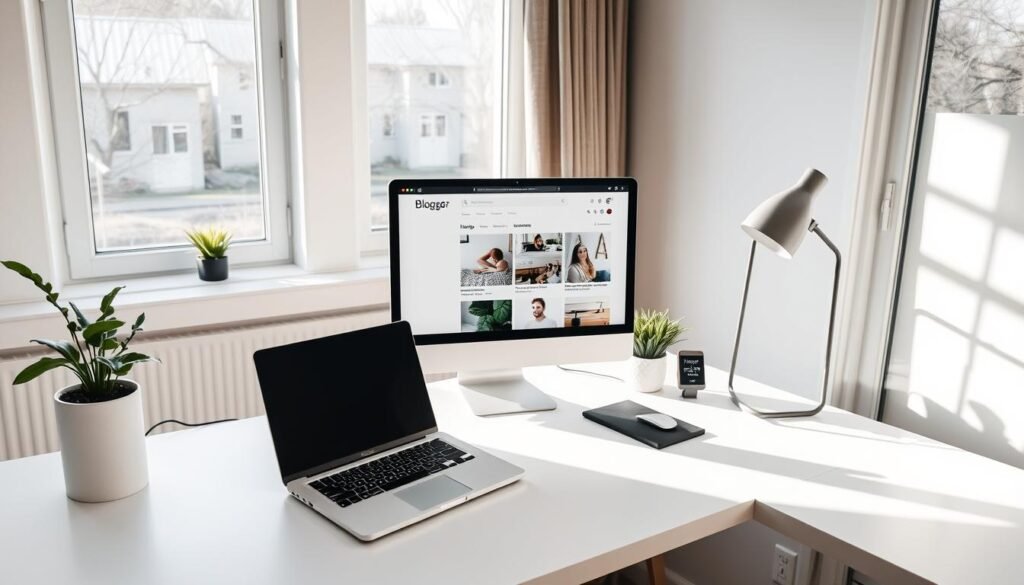
Creating a Content Structure
A clear content structure involves planning how your posts will be categorized and labeled. This makes it easier for readers to find related content and for search engines to crawl your site effectively.
Blog Post Categories Best Practices
Best practices include keeping your labels concise and relevant, avoiding duplication, and ensuring that each label has a clear purpose. Regularly reviewing and updating your labels and categories can help maintain a clean and navigable blog.
Enhancing Your Blog with Gadgets and Widgets
To take your Blogger blog to the next level, you can enhance it with various gadgets and widgets. These elements not only improve the functionality of your blog but also make it more engaging for your readers.
Adding Essential Sidebar Widgets
Sidebar widgets are crucial for adding dynamic content to your blog. You can add widgets such as a blog archive, popular posts, or social media links to make your blog more interactive.
To add a widget, navigate to the Layout section of your Blogger dashboard, click on Add a Gadget in the sidebar, and choose the widget you want to add.
Customizing Widget Placement
Customizing the placement of your widgets allows you to control the layout of your blog. You can drag and drop widgets to different sections of your blog, such as the sidebar or footer.
This flexibility helps you create a unique and user-friendly interface for your readers.
Third-Party Widgets Integration
Blogger allows you to integrate third-party widgets to enhance your blog’s functionality. Some popular third-party widgets include:
- Social Media Widgets: These widgets help you connect your blog with your social media profiles, making it easier for readers to follow you.
- Subscription Forms: Adding a subscription form widget enables readers to subscribe to your blog easily, keeping them updated on your latest posts.
Social Media Widgets
Social media widgets can be added to your blog to link to your social media profiles. This integration helps increase your social media following and drives traffic between your blog and social media platforms.
Subscription Forms
Subscription forms are essential for building your blog’s email list. By adding a subscription form widget, you make it easy for readers to stay updated with your latest content.
Mobile Display Considerations
When adding gadgets and widgets, it’s essential to consider how they will display on mobile devices. Ensure that your chosen widgets are mobile-friendly and do not clutter your blog’s mobile version.
Optimizing Your Blogger Blog for Search Engines
Search engine optimization (SEO) is key to making your Blogger blog successful. To improve your blog’s visibility, you need to optimize it for search engines. This involves several steps that can enhance your blog’s ranking and drive more traffic to your site.
Basic SEO Settings in Blogger
Blogger provides basic SEO settings that you can configure to improve your blog’s search engine ranking. To access these settings, navigate to your Blogger dashboard, click on “Settings,” and then “Search preferences.” Here, you can enable search description, meta tags, and other SEO-related features.
Custom Meta Tags and Descriptions
Custom meta tags and descriptions help search engines understand the content of your blog posts. You can add meta descriptions to your posts by including a compelling summary of your content. This not only improves SEO but also entices users to click on your post in search results.
Mobile-Friendly Configuration
Ensuring that your Blogger blog is mobile-friendly is crucial for SEO. Most users access blogs through mobile devices, and search engines prioritize mobile-friendly sites. Blogger themes are generally responsive, but you can further customize your blog’s mobile settings to enhance user experience.
Image Optimization
Optimizing images on your blog involves using descriptive file names and alt tags. This helps search engines understand the content of your images and can improve your blog’s visibility in image search results.
Internal Linking Strategies
Internal linking helps users navigate your blog and improves SEO by spreading link equity across your site. Create a logical structure by linking to relevant posts and pages, making it easier for both users and search engines to find your content.
By implementing these SEO strategies, you can significantly enhance your Blogger blog’s visibility and attract more readers.
Your Blogger Blog Journey: Next Steps and Growth Strategies
With your Blogger blog set up and optimized, you’re ready to take the next steps in your blogging journey. Having followed the steps to create a Blogger blog from scratch, you now have a solid foundation to start a Blogger blog that attracts and engages your target audience.
To grow your blog, focus on creating high-quality, relevant content that resonates with your readers. Utilize labels and categories to organize your posts and make it easier for visitors to find what they’re looking for. Engage with your audience by responding to comments and creating a community around your blog.
Promote your blog on social media platforms and consider collaborating with other bloggers or influencers in your niche. Monitor your blog’s performance using analytics tools, and adjust your strategies accordingly. By consistently producing valuable content and interacting with your audience, you’ll be well on your way to establishing a successful Blogger blog.
FAQ
What is the first step to creating a Blogger blog?
How do I choose a blog name and title for my Blogger blog?
Can I use an existing Google account to access Blogger?
How do I select a blog address (URL) for my Blogger blog?
What are the best practices for blog post categories?
How do I optimize my Blogger blog for search engines?
Can I customize the theme of my Blogger blog?
How do I add images and media to my Blogger blog posts?
What are gadgets and widgets in Blogger, and how can I use them?
How do I manage comments on my Blogger blog?
What are the steps to create a Blogger blog from scratch?
How do I start a Blogger blog?
Discover more from Feenanoor
Subscribe to get the latest posts sent to your email.

